Buddhist Marriage Rituals
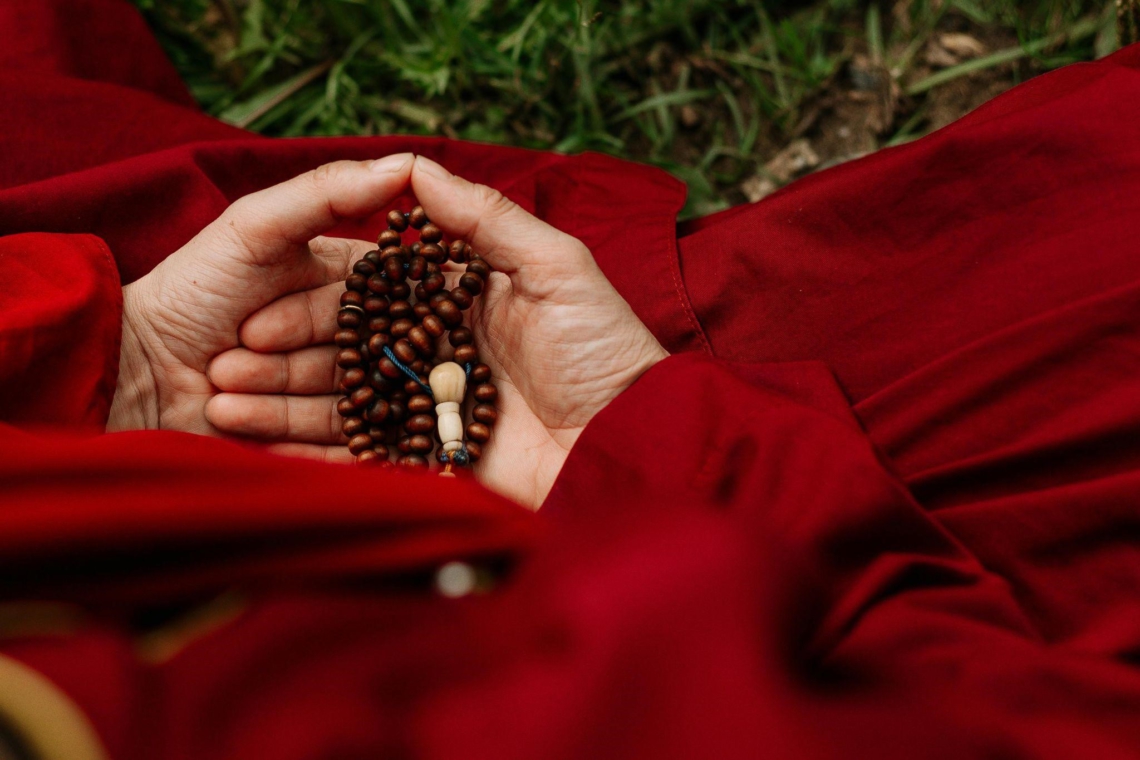
Exploring the subtlety of Buddhist wedding rituals
Buddhist marriage rituals aren’t just about uniting two people but also about two families, cultures, and everything that comes along. Especially prevalent in collectivistic societies, weddings are the most joyous events in people’s lives, an occasion of peak merrymaking. Of all religions, Buddhism is one such where the emphasis is more on vows than abiding by the typical religious practices. Well, in the words of the Buddhists, you can’t really call it a religion but a way of life.
Buddhist weddings do not necessarily include seeking salvation from Lord Buddha. Instead, the views are very liberal. People can partake in the marital journey without considering social marriage a religious duty. Mostly common in India, Asia, and Southeast Asia, Buddhist couples amalgamate age-old traditions and modern elements to make their special day distinctive.
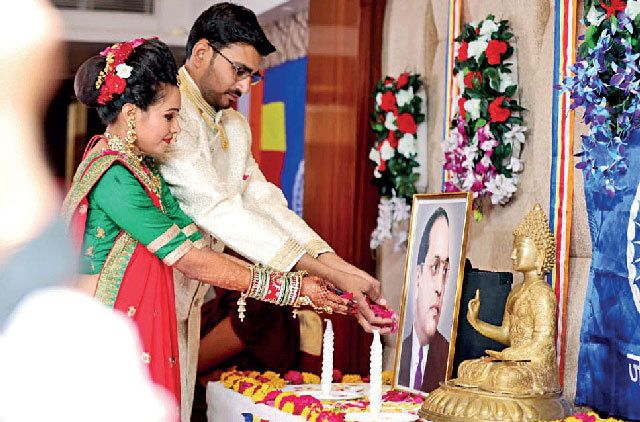
How are Buddhist marriage rituals different from others?
Though you can expect a delectable array of food and colourfully dressed guests engaging in conversations and laughter over wine, the secular wedding structure is usually private. Close friends and family are common. However, some couples choose to keep the guest list long. And that’s absolutely okay in their culture. The couple takes the wedding vows before the monk and then obtains blessings. But this is also not a necessity. In places where people don’t have access to temples or monks, any friend or relative of the bride or groom can perform the ceremony.
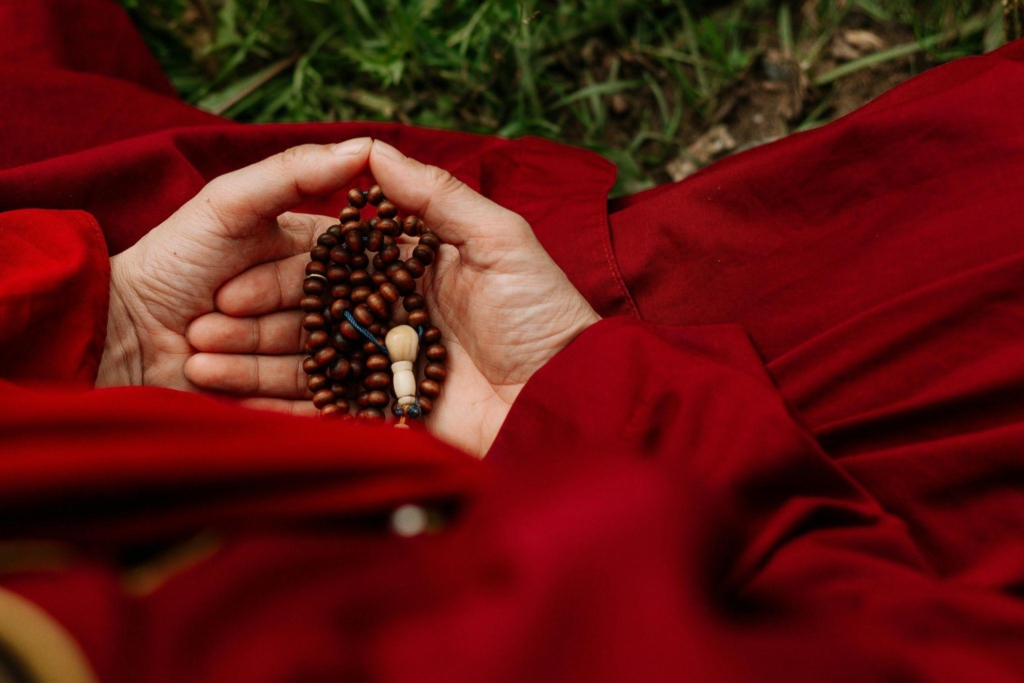
Unlike Hinduism, Buddhism allows the bride and groom to conduct the nuptial vows at home in the presence of a shrine erected with a statue of Buddha. Buddhist weddings are pleasing to the eyes, as they refrain from complicated rituals. The colour palette is lighter, and the ceremony lasts 30 minutes to one hour. However, the longevity depends on the couple completely. If you’re wondering how they’re so different from any other format, that’s because rigid beliefs don’t define their life.
Now, when you have a basic understanding, let’s step up.
Check this also Nepali Wedding Rituals
Pre-wedding rituals
Match-making
Coming to the first step, match-making, which is more or less common across all religions. If you go by the age-old traditions, you’d find the parents of the groom or the bride being the marriage fixers. But in modern times, the eligible girl or boy can mutually agree to take the relationship forward. Both works.
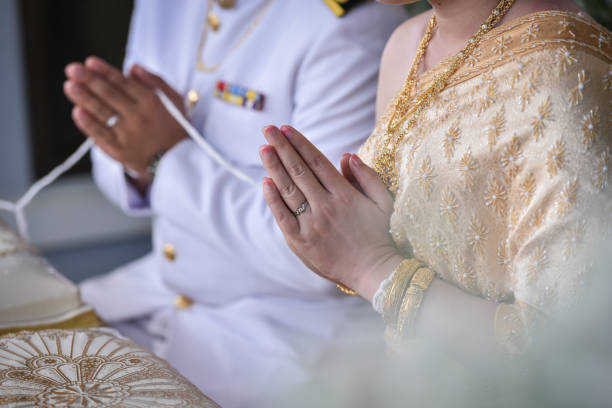
Generally, the groom’s family brings the proposal. After the horoscope match ceremony, which is one of the most crucial steps in a Buddhist wedding, both parties give a nod.
But is that not all? Let’s move on to read the detailed points.
Check this also Pagan Wedding Rituals
Khachang
This step before the main ceremony rolls in is Khachang. Considered one of the first steps of the new phase of life, we can also call it a traditional nod from the bride’s family.
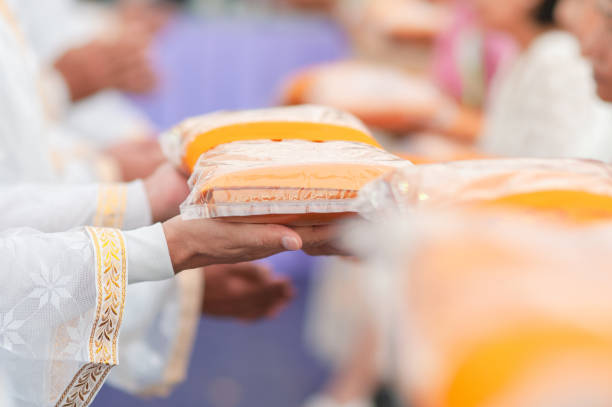
The groom’s family sends a friend with a bottle of wine and a white scarf (khada) to approach the girl’s parents in a unique way. On reaching, if the girl’s parents give their consent to the match, they accept the gifts.
From that very moment, the wedding bells start ringing. The two families meet up to decide on the dates, after analyzing the groom-to-be and the bride-to-be’s Kikas.
Check this also Chinese Wedding Rituals
What is a Kika?
A Kika is similar to a horoscope in the Hindu culture, which plays a pivotal role in match-making. The holy analysis not only sets the date of the wedding but also decides the color of the dresses the couple should be wearing. Even the bride’s time of departure from her maternal place is also fixed on that day.
If you think that the pre-wedding rituals end here, wait till we get into the next.
Nangchang
A Lama or a Ringpoche conducts the formal engagement ceremony or Nangchang. If you ever attend a Nangchang, you will find the groom’s mama doing the basic negotiations with the girl’s family. The maternal uncles steer the boat on this day. The girl is accompanied by friends, family, and siblings, and all of them get loaded with Tsang and many more meats as gifts.
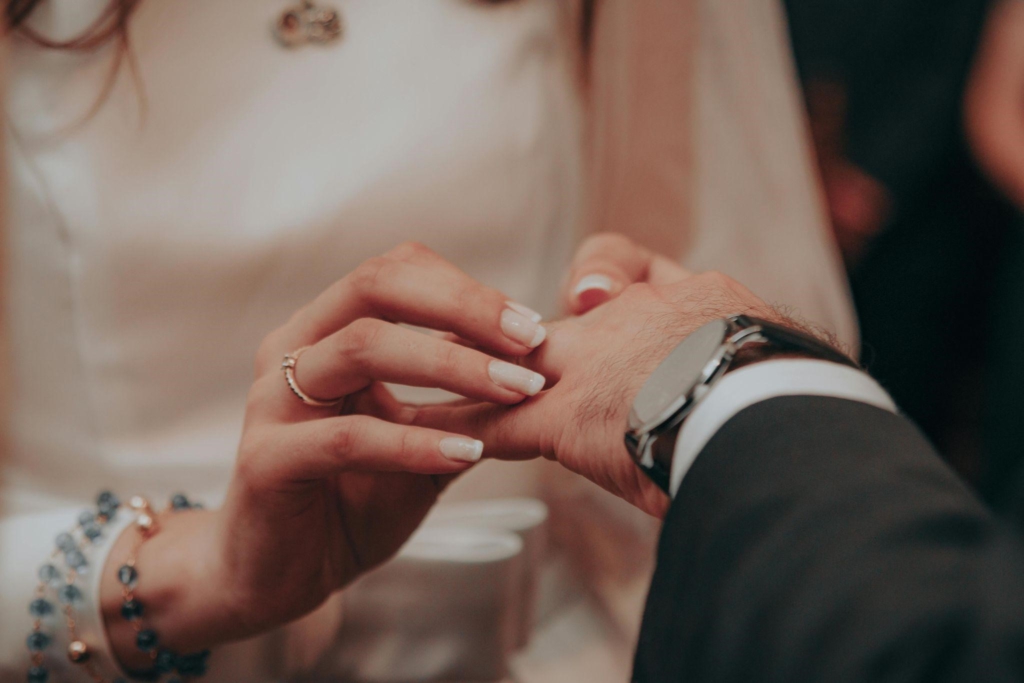
Mothers breast-feed the girl since birth and contribute the most to her upbringing. In Buddhist culture, to reward the mother, the groom’s side hands over rice and chicken to her. Even the unwedded cousins of the bride bag gifts on this auspicious day. To solidify the relationship, the kikas are matched again and the wedding date is reiterated. But you know what the nicest part is?
Something that’s a huge no in other religions, is a requisite here. The couples lives together in any of their homes since the Nangchang.
Now comes the time for the main wedding rituals.
Check this also Mormon Wedding Rituals
Wedding Rituals
Common across every culture, the wedding is divided into two parts – religious and social. Early in the morning, the bride and groom journey to the temple with their families. The groom’s side of the family carries trays of meat, wine, tea, and fruits. But a Buddhist wedding is incomplete without dainty jewelry, right? That is something the groom’s side offers to the bride.
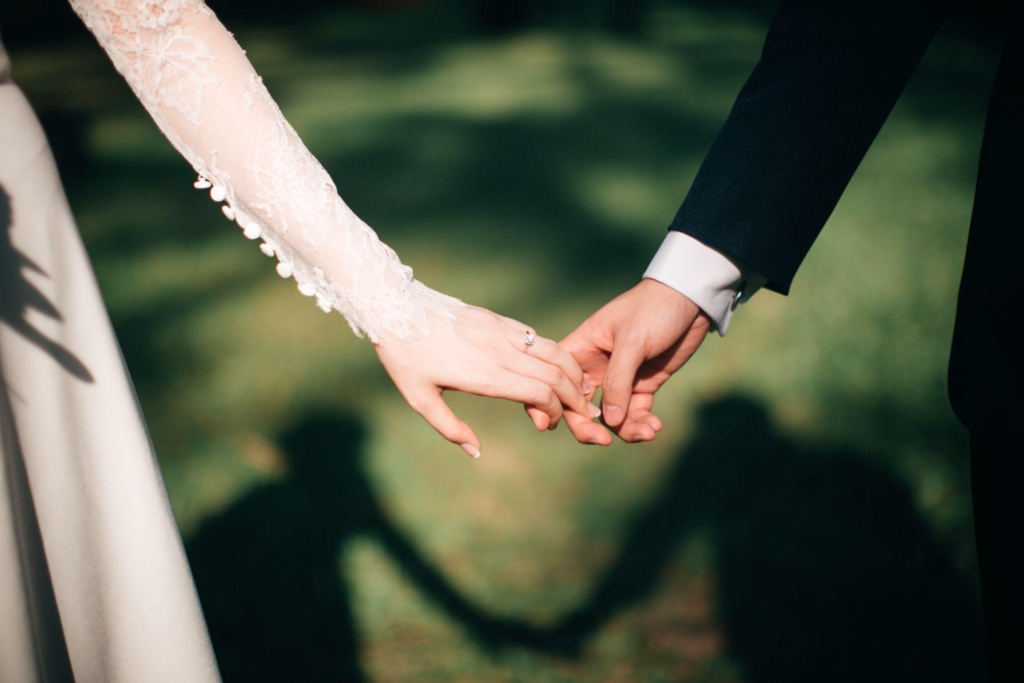
Though the exchange of dowry has been illegalized in most parts of India, depending on the social status of the families, the groom’s side pays some in exchange for the girl’s hand. Something which is contrary to other cultures, the Buddhists have a more just and liberal outlook.
Check this also Korean Wedding Rituals
Step-by-step rituals
The shrine before which the couple takes the vows is adorned with incense sticks, flowers, and candles. Both the families light up the candle to emblematize the union and solidify the bond. Since marriage is a union of families too, you would see families together reciting a series of hymns in Vandana, Tirasina, and Pancasila in the Pali language.
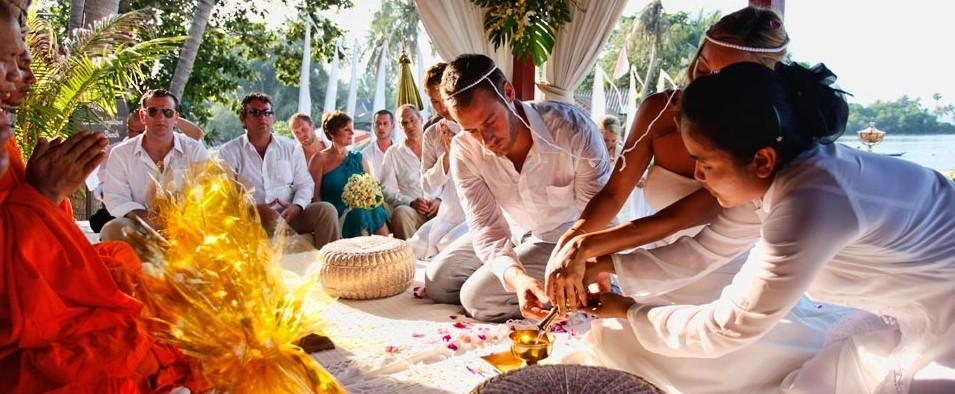
But nowadays, to uncomplicate the ritual, you will also find the hymns being recited in English. The couple’s vow, taken from the Siglivddo Sutta starts with the most meaningful question,” _______________ and _______________, do you pledge to honor one another as equal partners, leading with kindness, empathy, and courteousness, in keeping with the Sigalovada Sutta?” While only this encompasses all aspects of marital life, the couple can add their own essence in the form of words too!
After this, the parents of both sides of the priest loop around a holy thread in both the girl’s and the boy’s head, with one end of the thread immersed in sanctified water. ‘Tika’ or ‘tilak’ is common in a Indian wedding ritual, so here, you will find the priest applying a red paste on the couples’ foreheads. Along with this, the Mangala Sutta and Jay Mangala Gatha can also be seen, where guests and close ones recite Buddha’s teachings to commemorate the onset of a lovely marital journey.
Check this also Jewish Wedding Rituals
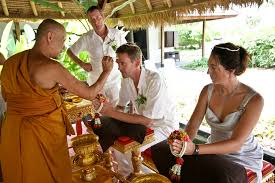
A visit to the bedroom is also part of the culture in South-East Asian Buddhist weddings. The social part of the wedding takes place in a non-religious environment, where guests enjoy a delectable feast, and engage in merriment over gifts exchange. After all, this is the time to meet that cousin who stays overseas, or reunite with your favorite aunt who you get to meet only once a year!
Post-wedding rituals
Now comes the time for the bride to leave her maternal home, according to the date fixed by the Kika. Though this is an occasion where close ones fail to hold back their tears, it’s also a moment of unexpressed joy. The bride and groom can step out of the girl’s house between the first and tenth day of the wedding. Again the liberalism plays out, as the couple can decide on staying separately on these days.
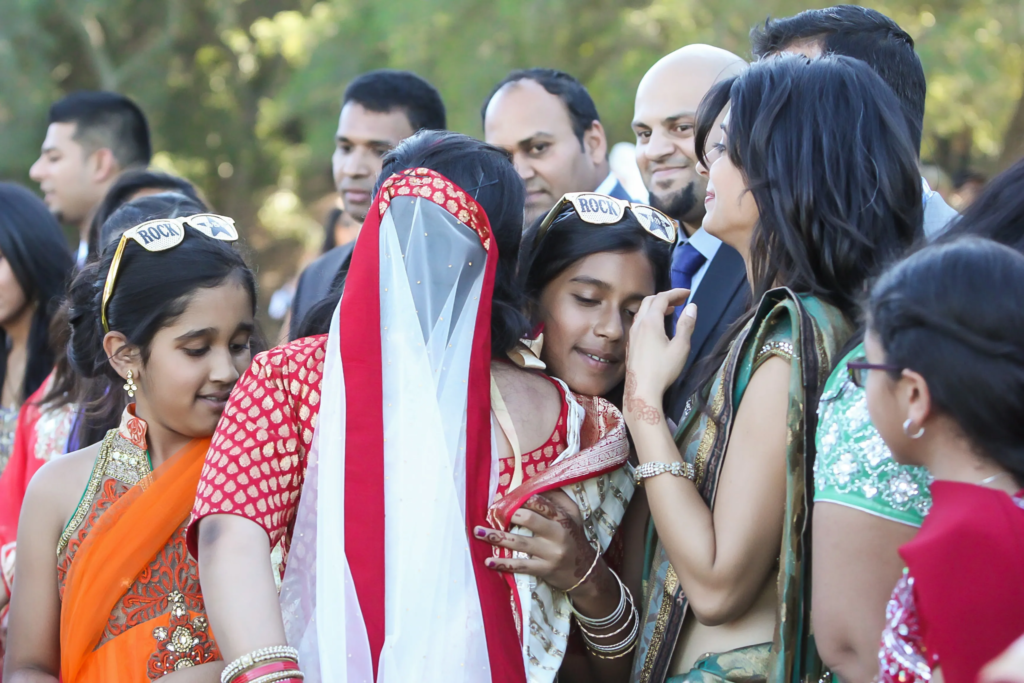
Dancing their heart out is also a part of the tradition nobody wishes to miss. Folk songs, and folk music are prevalent in the north-eastern part of the country. Zo-mal-lok Bhutia from Bhutan and Singhi Cham, Sangini and Maruni from Nepal, Tamang Selo in Sikkim, and Yak Cham and Chabrung in Meghalaya and Sikkim are some of the common dance forms you can have a glimpse of.
Check this also Iyengar Wedding Rituals
Wedding attire
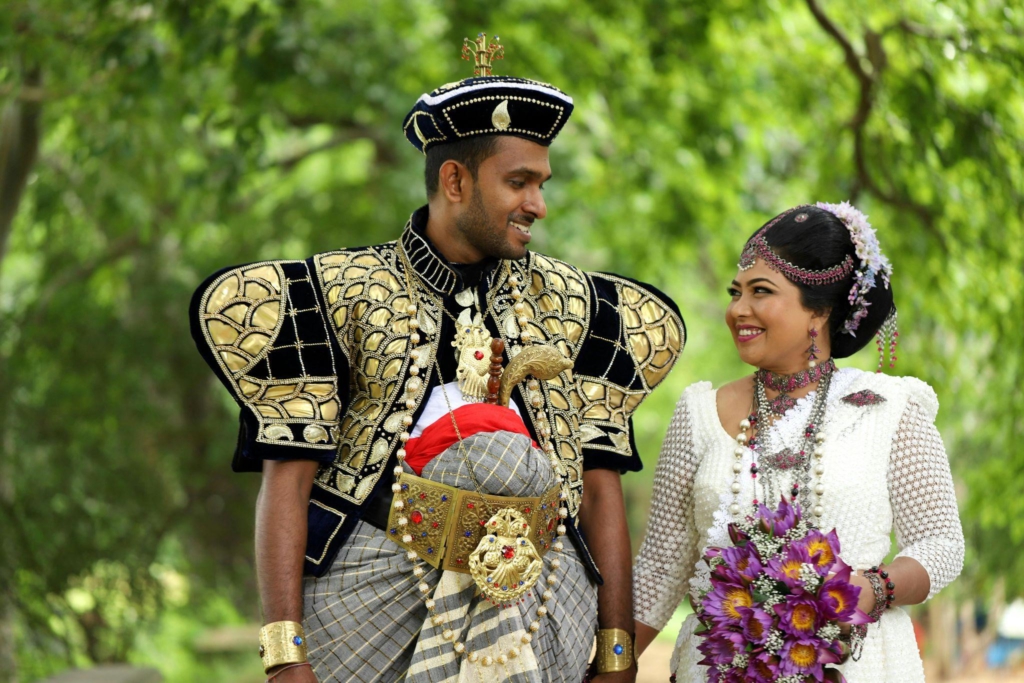
Generally, Osariya(Sari in the shade of white) paired with Nalalpata(head ornament) is seen among brides hailing from Sri Lanka. In other parts, the bride slips in a Bhaku, a sarong of full-length, pairing it with a long-sleeved blouse(Hanju). The jewelry usually can either be in gold or anything in pearl, turquoise, or coral. Again, to reiterate, the choices in a Buddhist wedding lie with the couple taking the vows. The groom’s Bhaku is customarily paired with a waistcoat(Lajha). Brocade fabrics are commonly seen in both the bride and groom’s attires.
Check this also Kerala Wedding Rituals
Wedding Cuisine
Even for food, the traditional food of the community where the couple is getting wedded is included. In Maharashtrian Buddhist weddings, cuisines range from bata vada, stuffed brinjal to bhajis and Puran Poli, whereas in other regions, the Buddhists opt for oriental food including meat(beef and pork). Weddings in Thailand go for the staple Thai items, whereas in the north-eastern region of India, roasted or boiled food is common.
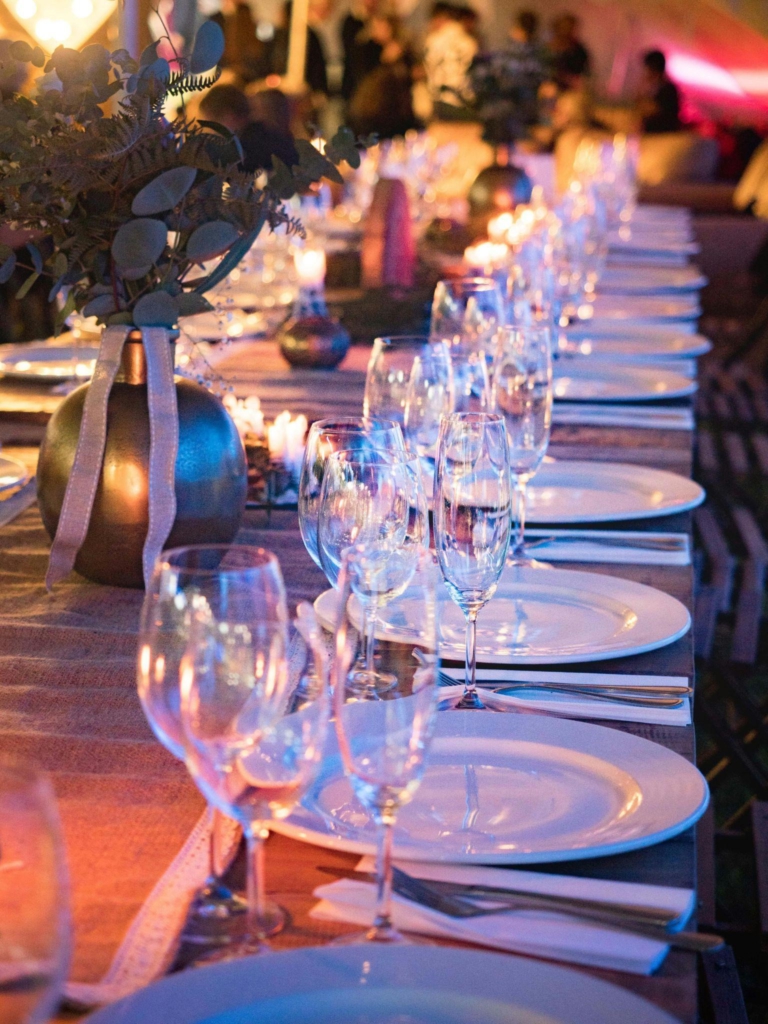
One thing you can’t overlook is the will of the Buddhists to break free from the rigid caste boundaries, which Dr. BR Ambedkar tried to curb. Buddhism was born with the goal of enlightening the common crowd. Since Siddharth Gautama discarded wealth and riches to embark on a journey to taste asceticism, he showed the way to his disciples to do the same. If you ever get a chance, do self-invite yourself to a Buddhist wedding to experience the spectacle.
Check this also Kannada Wedding Rituals



